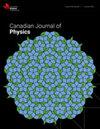Study of 6,8He+p elastic scattering using BHF Formalism with Three Body Force
IF 1
4区 物理与天体物理
Q3 PHYSICS, MULTIDISCIPLINARY
引用次数: 0
Abstract
In the present work we have analysed the elastic scattering data of 6He+p at 25.6, 38.6, 40.9 and 71 MeV/A and 8He+p at 15.6, 25.6, 32.5, 66 and 72 MeV/A, using the microscopic local optical potential calculated within the framework of Brueckner-Hartree-Fock (BHF) formalism. The calculation requires mainly two inputs: (1) the nucleon-nucleon (NN) interaction and (2) the nucleon distributions in target nuclei. Realistic inter-nucleon (NN) potential Argonne v18 (AV18) along with the Urbana IX (UVIX) model of three body force with several nucleon density distributions is used in the present work for generating the nucleon-nucleus optical potential. We have used the exact method for calculating both the direct and the exchange parts of the spin-orbit potential. We reconfirm the earlier results that the spin orbit potential for these neutron rich nuclei is diffused and extended. Our results show that the different density distributions reproduce rather well the experimental differential cross sections for both isotopes, while the phenomenological density with two neutron halo gives satisfactory results for 6He-p analysing power data. None of the densities used for 8He can reproduce the experimental analyzing power data. Our analysis reveals that the calculated microscopic optical potentials, with and without three body force using BHF approach provides satisfactory agreement with the elastic scattering data for 6,8He+p.用三体力BHF形式研究6,8 he +p弹性散射
在本工作中,我们利用在brueckner - hartre- fock (BHF)形式框架内计算的微观局部光势,分析了6He+p在25.6、38.6、40.9和71 MeV/A和8He+p在15.6、25.6、32.5、66和72 MeV/A的弹性散射数据。计算主要需要两个输入:(1)核子-核子(NN)相互作用和(2)目标核中的核子分布。本文利用Argonne v18 (AV18)和Urbana IX (UVIX)三体力模型(具有多种核子密度分布)来产生核-核光学势。我们用精确的方法计算了自旋轨道势的直接部分和交换部分。我们再次确认了先前的结果,即这些富中子核的自旋轨道势是扩散和扩展的。结果表明,不同的密度分布较好地再现了两种同位素的实验微分截面,而具有两个中子晕的现象学密度对6He-p分析功率数据给出了满意的结果。8He所使用的密度都不能重现实验分析功率数据。我们的分析表明,用BHF方法计算的有和没有三体力的微观光势与6,8 he +p的弹性散射数据吻合得很好。
本文章由计算机程序翻译,如有差异,请以英文原文为准。
求助全文
约1分钟内获得全文
求助全文
来源期刊

Canadian Journal of Physics
物理-物理:综合
CiteScore
2.30
自引率
8.30%
发文量
65
审稿时长
1.7 months
期刊介绍:
The Canadian Journal of Physics publishes research articles, rapid communications, and review articles that report significant advances in research in physics, including atomic and molecular physics; condensed matter; elementary particles and fields; nuclear physics; gases, fluid dynamics, and plasmas; electromagnetism and optics; mathematical physics; interdisciplinary, classical, and applied physics; relativity and cosmology; physics education research; statistical mechanics and thermodynamics; quantum physics and quantum computing; gravitation and string theory; biophysics; aeronomy and space physics; and astrophysics.
 求助内容:
求助内容: 应助结果提醒方式:
应助结果提醒方式:


